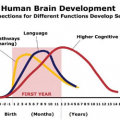【墨尔本PTE】PTE现在真题音频越来越多,今天文波PTE培训学校就给各位PTE考生找了一篇RL的真题音频,希望对大家有用:
自习先练习一遍
有不懂的地方?
请看文波PTE提供的文本:
Ever try to get a baby to smile? It can seem close to impossible—and then suddenly there it is: that elusive, seemingly joyous grin. Well it turns out those smiles aren’t spontaneous—they’re strategic.
Researchers have found that when babies smile, it’s for a reason. They want whoever they’re interacting with—typically a parent—to smile back. And they time it just so, a smile here and a smile there. The researchers call it sophisticated timing. The study is in the journal PLoS ONE.
The researchers enlisted real mothers and infants and quantified their interactions, which fell into four categories. One: babies wanted to maximize the amount of time smiling at their mothers. Two: they wanted to maximize the time the mothers smiled at them. Three: they wanted to experience simultaneous smiling, and four: no smiling at all.
By studying when smiles happened and what the subsequent effect was, the investigators were able to figure out that for mothers the goal 70 percent of the time was to be smiling simultaneously—while for babies 80 percent of the time they just wanted their mother smiling at them. So, mothers want the interaction, while babies just want to be smiled at.
So your baby may not be able to feed itself, talk or even turn over yet. But when it comes to smiles, babies seem to know exactly what they’re up to.
文波陪伴,英语不难;
文波陪伴,PTE不难。
墨尔本悉尼霍巴特阿德莱德文波英语,澳洲最负责,最有效,通过率最高的英语培训学校





